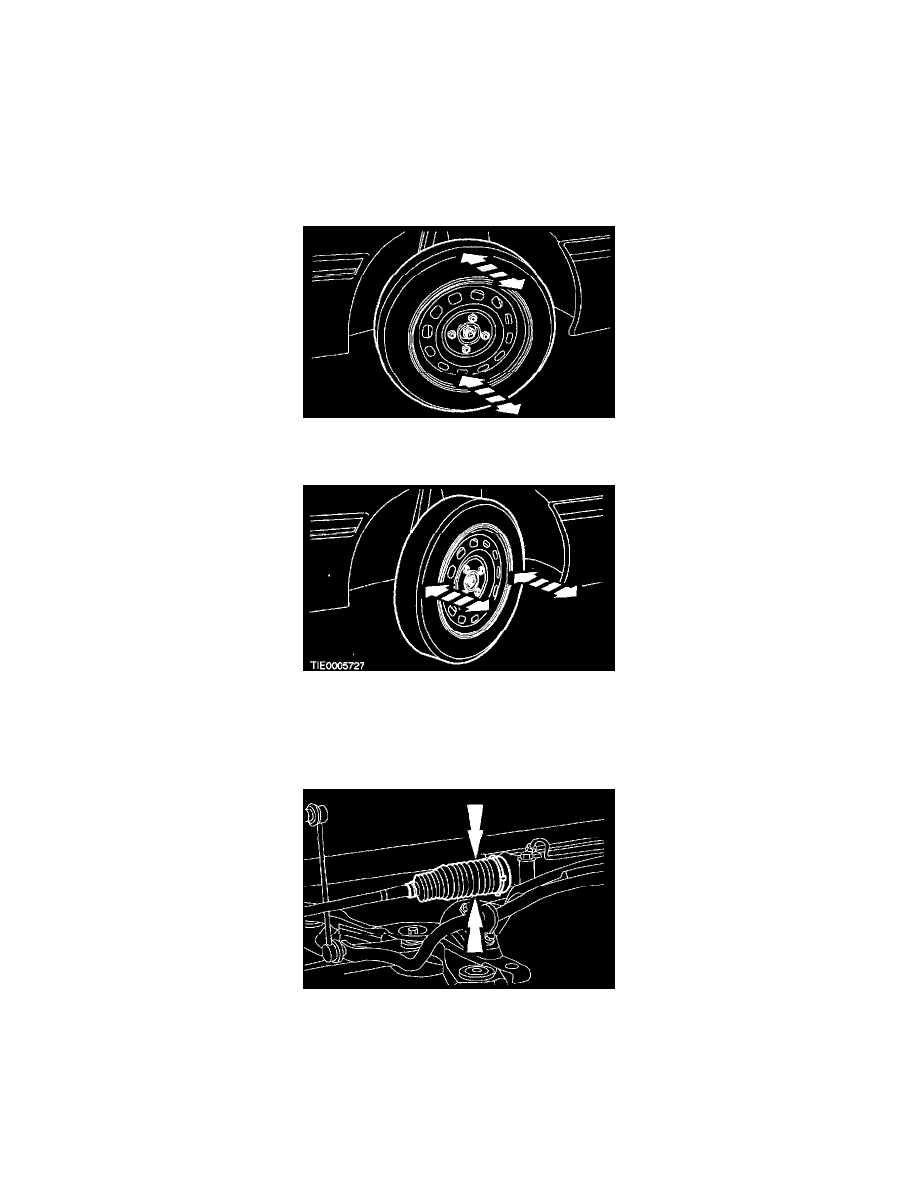Focus ZX5 L4-2.0L DOHC VIN 3 (2002)

Tie Rod End: Testing and Inspection
Tie-Rod End Inspection
1. NOTE: Noises such as knocks which may appear to originate from the steering linkage, may also be generated by front suspension components.
Be aware that most noises are not generated by steering components.
Raise and support the vehicle.
2. Visually inspect the steering linkage and front suspension components for signs of loose retaining nuts/bolts, worn or damaged front suspension,
steering gear bushings or steering gear boots.
3. Torque all steering linkage component retaining nuts and bolts. Torque the front suspension components.
4. Firmly grasp the road wheel and apply a rocking motion to the wheel, checking for any freeplay in the wheel bearings or suspension components:
install new components as necessary.
5. NOTE: To isolate the steering gear design clearance, check the right-hand linkage with the steering gear held against the right lock stop. Check
the left-hand linkage with the steering held against the left lock stop.
With the aid of another technician holding the steering firmly against the lock stops, firmly grasp the road wheel and apply a rocking motion to the
wheel checking for any freeplay in the steering linkage.
6. If any freeplay is detected, establish where the freeplay is by compressing the boot and feeling for play in the tie-rod inner joint, while continuing
to rock the road wheel.
7. If play is evident in the tie-rod inner ball joint, install a new tie-rod.
8. If no freeplay is detected within the tie-rod inner ball joint, install a new tie-rod end.
9. Repeat steps 4 to 8 for the opposite side.
